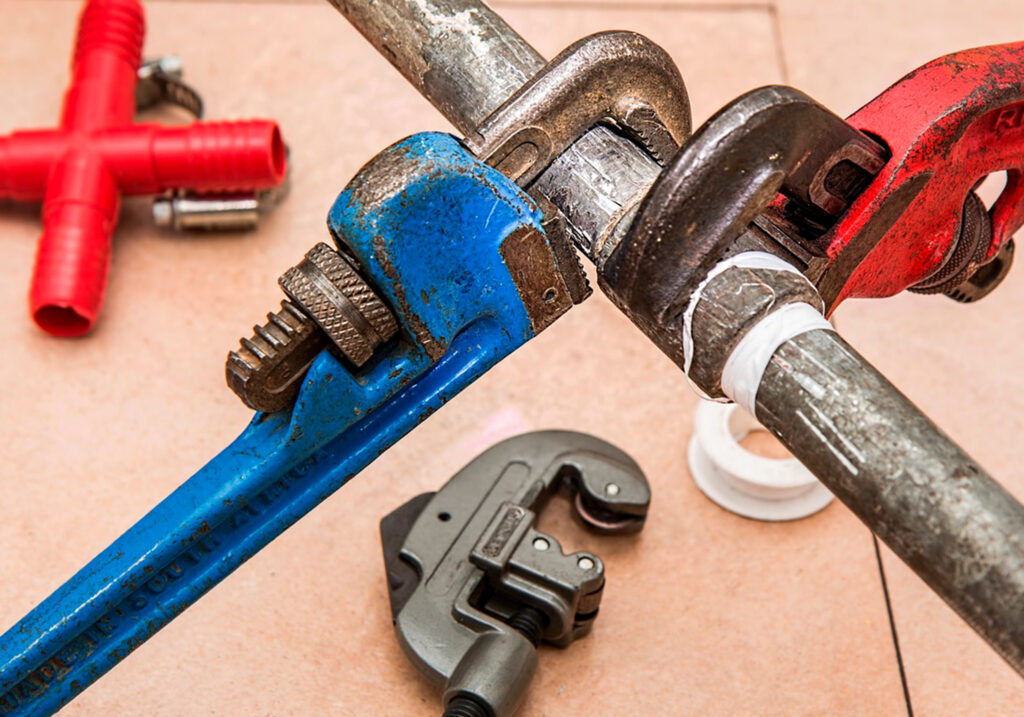A metal barn serves a variety of purposes, from housing livestock and storing equipment to functioning as a workspace or even a living space. While the structure itself provides shelter and protection, adding electricity and plumbing makes it more functional. That makes it more convenient and efficient for daily use.
Ifr you need lighting for nighttime work, power for machinery, or running water for cleaning and livestock care, a properly installed electrical and plumbing system is essential.
Successfully adding electricity and plumbing into a metal barn requires careful planning, knowledge of installation techniques, and compliance with local regulations. Understanding the process will help you design a system that is both efficient and safe while ensuring long-term usability.
Planning for Electricity and Plumbing Installation
Before starting any installation, it is important to assess your needs and create a comprehensive plan. Identifying the specific electrical and plumbing requirements of your barn will help determine the materials, labor, and costs involved in the process.
The first step is determining how electricity will be used in the barn. If the barn is primarily used for storage, minimal lighting and a few power outlets may be sufficient. However, if the barn is used for livestock care, equipment operation, or as a workshop, the electrical load will be significantly higher. Similarly, the need for plumbing depends on whether the barn requires basic water access, such as a single faucet, or a more complex system that includes sinks, water troughs, and even restrooms.
It is also important to check local building codes and obtain any necessary permits before beginning construction. Regulations vary by location, and failure to comply with them may result in fines or require costly modifications later. Consulting with a licensed electrician and plumber ensures that the system is installed according to code and meets all safety standards.
A detailed layout should be drawn to mark the locations of electrical panels, outlets, switches, water lines, and plumbing fixtures. This blueprint will serve as a guide throughout the installation process, ensuring that all components are placed efficiently and that the overall system functions seamlessly.
Installing Electricity in a Metal Barn
Adding electricity to a metal barn begins with selecting an appropriate power source. If the barn is close to a house or another building with existing power, an extension from the main electrical panel may be the most convenient and cost-effective option. However, for barns located farther away or requiring significant power consumption, a dedicated power line from the utility company or an off-grid system, such as solar panels, may be necessary.
The next step is installing an electrical panel inside the barn. The panel distributes power throughout the barn and should be placed in a dry, accessible location. From the panel, electrical wiring is run to outlets, lights, and equipment throughout the barn. Since metal barns can conduct electricity, all wiring should be enclosed in protective conduit to prevent accidental contact or damage.
For lighting, LED fixtures are an energy-efficient option that provides bright illumination while keeping electricity costs low. The placement of lights should be carefully planned to cover work areas, entrances, and storage sections effectively. Power outlets should be installed at convenient locations based on the intended use of the barn, ensuring easy access for tools and equipment.
Electrical safety is critical, especially in barns exposed to moisture and dust. Ground Fault Circuit Interrupter (GFCI) outlets should be installed in areas where water exposure is likely, such as near wash stations and sinks. A grounding system should also be incorporated to reduce the risk of electrical shocks and fire hazards.
After the wiring and fixtures are installed, the system must be tested before being connected to the main power source. An electrician should inspect all connections to ensure they meet safety regulations and are properly grounded. Once approved, the electricity can be switched on, and the system can be used as needed.
Installing Plumbing in a Metal Barn
The addition of plumbing to a metal barn enhances its functionality, especially for agricultural and livestock-related activities. Access to running water is essential for cleaning, animal hydration, and sanitation. Like the electrical system, plumbing installation requires careful planning to ensure efficient water distribution and proper drainage.
The first consideration is selecting a reliable water source. If the barn is near a house or another building with an existing water supply, running pipes from the main water line may be the easiest option. For barns in remote locations, well water systems or rainwater collection methods may be necessary. A pressurized water system, including a pump and storage tank, may be required to ensure consistent water flow.
Once the water source is determined, trenches must be dug to lay underground water pipes. The depth of the trenches depends on local climate conditions and regulations, with colder regions requiring deeper pipes to prevent freezing during winter. Pipes should be made of durable materials such as PEX, PVC, or copper, depending on their intended use and exposure to environmental elements.
Inside the barn, water lines are connected to fixtures such as sinks, wash stations, and automatic watering systems for livestock. Each fixture must be properly sealed to prevent leaks, and shut-off valves should be installed at strategic points for maintenance and emergency repairs. If hot water is needed, a water heater may be installed to provide heated water for cleaning and sanitation purposes.
Drainage is another critical aspect of the plumbing system. Water used in the barn must be directed away to prevent flooding, structural damage, and hygiene issues. The type of drainage system depends on the barn’s needs and local regulations. Gravity-fed drains, septic systems, and French drains are common solutions that help manage wastewater effectively. Proper grading around the barn ensures that water does not accumulate near the foundation, reducing the risk of erosion and water damage.
After the plumbing system is installed, all pipes and fixtures should be tested for leaks and water pressure issues. Any necessary adjustments should be made before sealing the trenches and finalizing the installation. Professional inspection and approval may be required, especially for complex systems that involve septic connections or wastewater management.
Protecting Electrical and Plumbing Systems from Environmental Damage
Since metal barns are exposed to varying weather conditions, special precautions must be taken to protect electrical and plumbing systems from damage. Moisture is one of the biggest concerns, as it can cause rust, corrosion, and electrical failures. Using weatherproof electrical boxes and sealed conduits helps protect wiring from moisture-related hazards. Proper ventilation inside the barn also helps reduce condensation buildup, which can affect both electrical components and plumbing pipes.
For plumbing systems, insulation is essential to prevent pipes from freezing in cold climates. Foam pipe insulation or heat tape can be used to keep water flowing even in subzero temperatures. Additionally, ensuring that water lines are installed with a slight slope prevents standing water from freezing inside the pipes, reducing the risk of blockages and pipe bursts.
Regular maintenance is necessary to keep both systems functioning efficiently. Electrical components should be inspected periodically for signs of wear or exposed wiring, while plumbing fixtures should be checked for leaks or pressure inconsistencies. Keeping drainage systems clear of debris ensures smooth wastewater flow and prevents backups.
Final Inspection and Testing
Before using the newly installed electrical and plumbing systems, a final inspection should be conducted to ensure everything is functioning properly and meets safety standards. Testing all electrical connections, outlets, and lighting ensures that power is distributed correctly and safely. Similarly, running water through the plumbing system and checking for leaks verifies that pipes and fixtures are working as intended.
Professional inspections may be required to certify that the installation complies with local building codes. Once the systems pass inspection, they are ready for regular use, enhancing the barn’s functionality and convenience.
Conclusion
Adding electricity and plumbing to a metal barn transforms it from a simple structure into a fully functional space suited for various activities. Whether used for agriculture, livestock care, or as a workshop, having reliable power and water access increases efficiency and convenience. A well-planned installation ensures that both systems operate safely and effectively, meeting the needs of the barn’s occupants while complying with local regulations.
Investing in quality materials, following proper installation procedures, and seeking professional guidance when necessary will result in a durable and efficient setup. With electricity and plumbing in place, a metal barn becomes a valuable and versatile asset that can serve multiple purposes for years to come.

